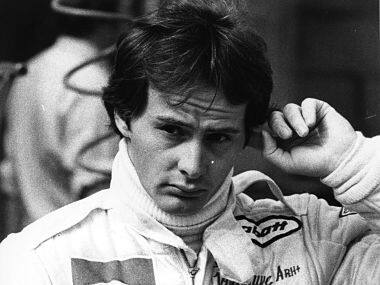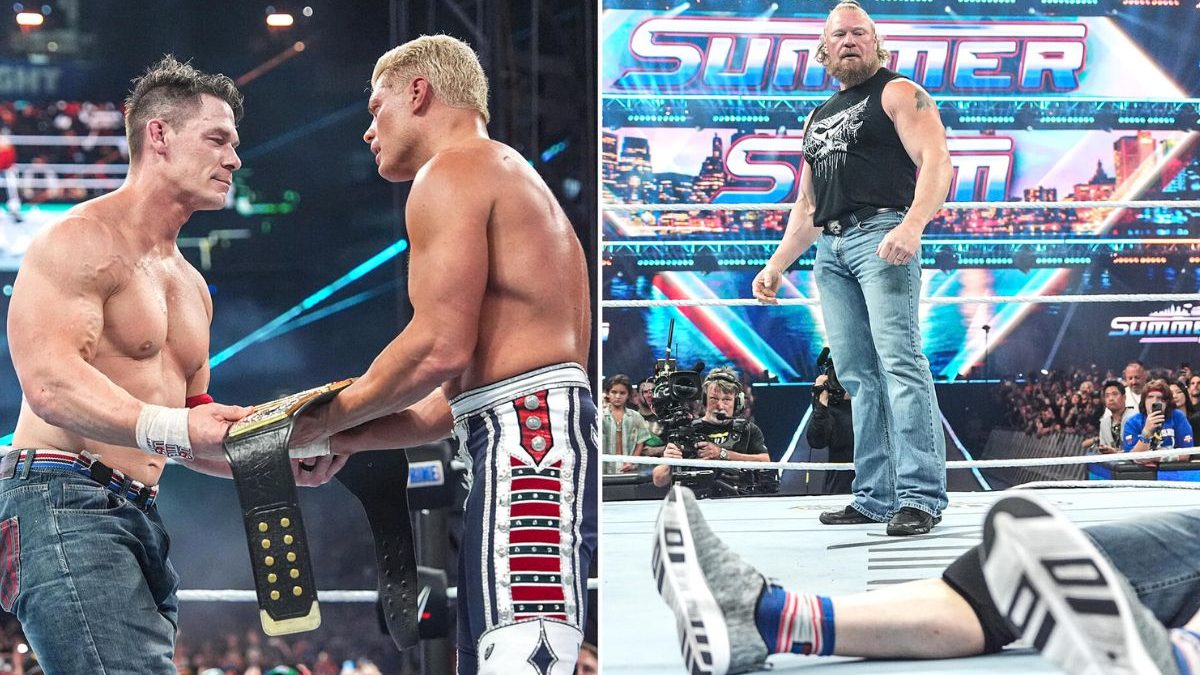“He will remain as a member of the family of the truly great drivers in auto racing history. He did not race to finish. He did not race for points. He raced to win. He was small in stature, but he was a giant.” This was Gilles Villeneuve in five-time world champion Juan Manuel Fangio’s words. Going by raw numbers Fangio’s career eclipsed Villeneuve’s – the legendary Argentine won 23 Grands Prix and five world titles, compared to Villeneuve who never won the world championship and claimed just six race wins over the duration of his short career. Yet the name “Villeneuve” is whispered in the same breath and with the same reverence as some of the sport’s greatest champions owing to the Canadian’s sheer ability, flamboyance and spectacular feats behind the wheel. Driving mostly uncompetitive cars, his prowess on the track spawned a legend that still continues to fire the imagination of motor-racing fans three decades after his death. To put it simply, Villeneuve was the purest embodiment of the spirit of the racing driver. [caption id=“attachment_851161” align=“alignleft” width=“380”]  Gilles Villeneuve was a simply superb driver. Getty Images[/caption] All he wanted was to drive and drive fast, lap after lap, beyond the threshold of his car’s limits – and indeed his own – irrespective of whether he was fighting for the win or fighting at the back of the field. “I race to be the first even when I can’t win, I like racing all the same, for the sake of racing. This is my job and nothing stops me. Should I not think this way I could not be a driver.” Villeneuve first fell in love with speed and the exhilaration that only driving on the absolute limit can give you, as a young boy growing up in Berthierville, Quebec. He started out racing snowmobiles and contesting drag races. He then joined the Jim Russell Racing School so he could gain a competition license, thus beginning the journey which would eventually take him to the top of the motor-racing ladder. But by no means was it easy, with money – or the lack of it – a constant worry, as Villeneuve competed first in the Formula Ford series and later in the Formula Atlantic championship. At one point, Villeneuve was so strapped for cash that he sold his family home and took his wife Joann and children Jacques and Melanie on the road with him, with the family living out of a motorhome. Opportunity finally came knocking when 1976 world champion James Hunt spotted Villeneuve’s searing talent in a non-championship Formula Atlantic race (in which Villeneuve beat Hunt) and asked McLaren to hire him. The Woking-based squad gave Villeneuve his debut at the 1977 British Grand Prix at Silverstone and he didn’t disappoint. Villeneuve qualified ninth, splitting the two McLarens of Hunt and Jochen Mass despite driving an older chassis, and finished the race tenth, setting the fifth fastest time along the way, after a faulty temperature gauge forced him into an unscheduled pitstop that cost him two laps. Despite his promising debut, McLaren dropped him in favour of Patrick Tambay for some unfathomable reason and Villeneuve’s career looked to have been over before it had even started. But Villeneuve’s debut had impressed several in the paddock with one man in particular taking notice. “When they presented me with this ‘piccolo canadese’, this minuscule bundle of nerves, I immediately recognised in him the physique of Nuvolari and said to myself, let’s give him a try,” the legendary Enzo Ferrari has been quoted as saying in journalist Gerald Donaldson’s biography of Villeneuve. And so Enzo Ferrari, founder of one of the most successful Grand Prix teams put the boy from Berthierville, who had just the one race start to his name, in one of his scarlet cars towards the end of the 1977 season and the Villeneuve legend was born. Life at Ferrari would be difficult, however, and Villeneuve rarely had a competitive car. But that didn’t deter him and – despite the Italian press calling for his sacking after a series of retirements at the start of his Ferrari career – drives like the ones he put in to win the 1981 Monaco and Spanish Grands Prix, or the tenacity he displayed in his battle for second place with Rene Arnoux at the 1979 French Grand Prix, only endeared him to Ferrari and their legions of Tifosi, who have never loved a driver the same way since. “Enzo loved Gilles the way he did because he was such a fighter. It was always the characteristic in a racing driver that Enzo liked most, it was most important to him,” motor-racing journalist and Villeneuve’s friend Nigel Roebuck told Sky Sports in a show paying tribute to the driver. “I think in Gilles he saw this absolute never, never give up, and just fight to the last – and Enzo loved that.” But as ferocious a fighter as he was on the track, Villeneuve’s attributes as a person – his love of the truth, his sense of honour and loyalty – meant he was always fair in his battles, not letting his competitive streak get the better of him, and always keeping his word. The best example of this was probably the 1979 Italian Grand Prix. Ferrari team-orders at the time dictated that whichever driver was ahead in the points at the half-way stage of the season would be the one the team backed for the championship. In 1979 it was Villeneuve’s team-mate Jody Scheckter. As the Formula One circus arrived in Italy, Villeneuve’s only hope of keeping his title hopes alive into the final two rounds was to beat Scheckter. However, Villeneuve dutifully played his part and followed Scheckter home in second, thereby sacrificing his own title chances. “There was a great contrast between the man and the racing driver. As a man he was an innocent, he was completely apolitical, totally honest, guileless. But it was like Clark Kent in the phone box. Put him in a Formula One car and he had a competitiveness beyond anything that I have ever seen,” Roebuck said. It was no doubt this innocence and naiveté that Roebuck alludes to and the expectation that others would be loyal to him in the same way he had been loyal to Scheckter that contributed to Villeneuve’s death. Villeneuve was leading the 1982 San Marino Grand Prix with Ferrari team-mate Didier Pironi running second. The drivers had been told to save fuel and bring the cars home but on the last lap, Pironi passed Villeneuve for the lead, stealing the win and leaving him furious. “Before this, our relationship had always been good, and I trusted him, but I won’t make that f***ing mistake again,” Villeneuve told Roebuck a few days after the race in a conversation recounted in a book about Formula One edited by Donaldson. “I guess people will say I’m overreacting, but I don’t see it that way. I trust people until they give me reason not to, but if they let me down, that’s it.” And so, furious as he was at Pironi’s betrayal, Villeneuve, who had declared war on his team-mate, had a point to prove as Formula One headed to Zolder for the Belgian Grand Prix. It was Saturday, May 8th – the final qualifying session was well underway. Pironi was sixth, a shade quicker than Villeneuve, but the small Canadian wasn’t giving up just yet. Bolting on a fresh set of qualifying tyres, Villeneuve went hell-for-leather, as he always did, in pursuit of pole position. But, while on his flying lap, he came upon the much slower March of Jochen Mass. The cars collided and Villeneuve’s Ferrari was launched over the March, cartwheeling through the air and throwing Villeneuve into the catch fencing. “It was terrible when Gilles died. I cried that day and the next one, too, even though I had to race,” Rene Arnoux, the driver with whom Villeneuve had that memorable duel at the 1979 French Grand Prix said following his death. “And I remember the feeling that we were all starting equal from now on. Villeneuve was gone. We all knew he had a talent beyond our reach.” Perhaps the place Villeneuve held in the hearts of the Tifosi, perhaps the affection and love he earned thanks to his against-all-odds, never-give-up approach to racing is best summed up by a letter a 21-year-old woman wrote to Villeneuve after he was killed. “Hello Gilles: I still cannot believe you are no more… I did not know Nuvolari but I will talk to my daughter with pride about you,” the letter, reproduced by Donaldson in his biography of Villeneuve, said. “I will be able to tell her that I delighted in you and cried for you. I have within me the sense of infinite emptiness that I feel nothing will be able to fill except my tears. I hope that up there you have found a circuit and when the starting light is green, go Gilles.”
The name “Villeneuve” is whispered in the same breath and with the same reverence as some of the sport’s greatest champions owing to the Canadian’s sheer ability, flamboyance and spectacular feats behind the wheel.
Abhishek has only one passion in life. Formula One. He watched his first race on television way back in the mid-nineties with his father and since then has been absolutely hooked. In his early teens, he harboured dreams of racing in the top flight of motorsport, fighting wheel-to-wheel with the likes of Schumacher, Hill and Hakkinen but when it became evident that he didn't quite have the talent to cut it in go karts, let alone Formula One, he decided to do the next best thing - write about the sport. Abhishek is happiest when there's a race on television or when he's indulging in his F1 fantasies on the PlayStation. see more


)

)
)
)
)
)
)
)
)



